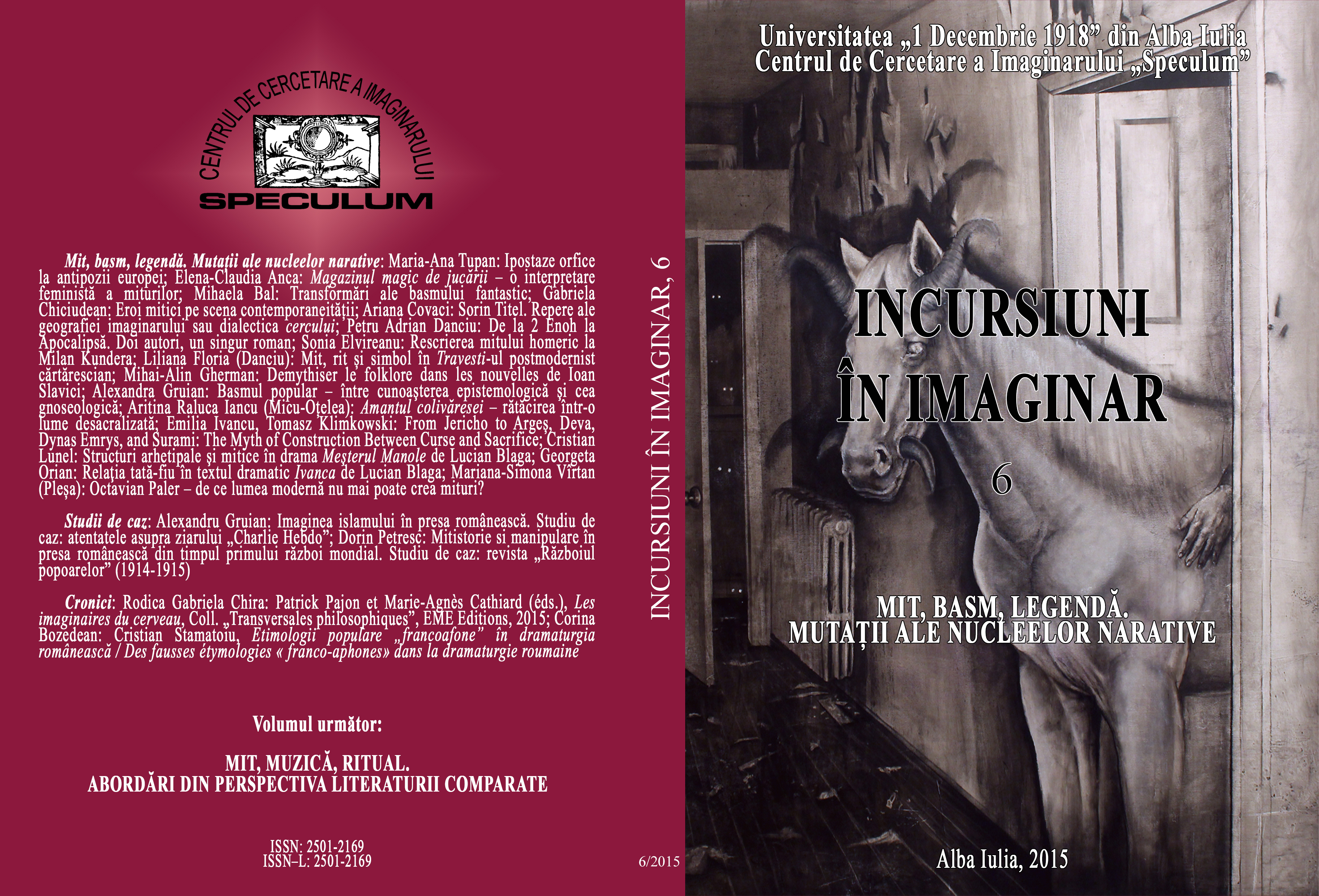IPOSTAZE ORFICE LA ANTIPOZII EUROPEI
ORPHIC INSTANCES AT THE ANTIPODES OF EUROPE
Author(s): Maria-Ana TupanSubject(s): Language and Literature Studies
Published by: Editura Aeternitas
Keywords: Thracian Orpheus; British Sir Orfeo; the making of a king; translatio imperii; political ethos;
Summary/Abstract: The present paper sets out to demonstrate that myths are not timeless narratives of universal value but historical constructions. Thracian Orpheus, who is positively assessed by poet Onomacritus, is mocked in Plato’sSymposiumfor his missing awareness of a transcendent world, only to be extolled as a civilizing hero who tamed the savage Pdrysses by Maxime de Tyr (Jean-Isaac Combes-Dounous: Dissertations de Maxime de Tyr: philosophe platonicien). Taken by the Belgic Celts to the British Isles, Thracian Orpheus undergoes several metamorphoses, the Auchinlek manuscript – the oldest - differing substatially from the Harley and Ashmole versions. The Dionysian element is played down, the later versions showing the making of the medieval king, who distances himself from nature, acquiring a new identity as harp player and worthy ruler of a civilized royal court (Sir Orfeo). As Walter Map’sHerlais very similar to a Romanian fairy tale, the two mythic motifs (descent to hell and the haunts of the living dead) are discussed comparatatively. Information provided by George T. Stokes inAncient Celtic Expositors. St Columbanus and His Libraryconcerning thecontinuous presence of the Celts on the territory conquered by the Anglo-Saxons is used to explain the translatioimperiidevice of Venta Belgarum (assembly of the Belgian Celts originating on Mount Haemus) to Wintan-ceastre (”Fort Venta”) – Winchester. DOI: 10.29302/InImag.2015.6.1
Journal: Incursiuni în imaginar
- Issue Year: 1/2015
- Issue No: 6
- Page Range: 11-23
- Page Count: 13
- Language: Romanian

